
The River Teme rises in Mid Wales, south of Newtown, and flows southeast roughly forming the border between England and Wales for several miles through Knighton before entering England in the vicinity of Bucknell and continuing east to Ludlow in Shropshire. From there, it flows to the north of Tenbury Wells on the Shropshire/Worcestershire border on its way to join the River Severn south of Worcester. The whole of the River Teme was designated as an SSSI by English Nature in 1996.

The River Clun runs mostly through Shropshire, England and joins the River Teme at Leintwardine, Herefordshire. The Clun Valley is part of the Shropshire Hills AONB.

Anchor is a remote hamlet in southwest Shropshire, England. The hamlet is the most westerly place in Shropshire.

Clungunford is a village and civil parish in south Shropshire, England, located near the border with Herefordshire.

Leintwardine is a small to mid-size village and civil parish in north Herefordshire, England, close to the border with Shropshire.
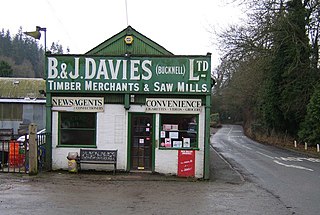
Bucknell is a village and civil parish in south Shropshire, England. The village lies on the River Redlake, within 660 yards (600 m) of the River Teme and close to the border of Wales and Herefordshire. It is about 6 miles (9.7 km) east of Knighton and is set within the Shropshire Hills Area of Outstanding Natural Beauty.
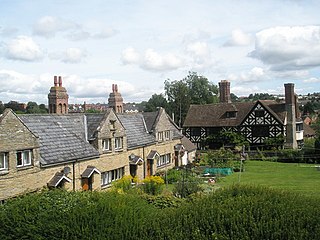
Ludford is a small village and civil parish in south Shropshire, England. The parish is situated adjacent to the market town of Ludlow and was, until 1895, partly in Herefordshire.
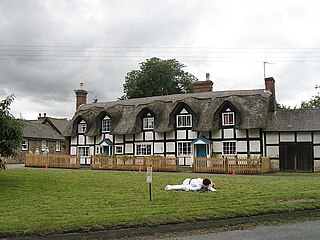
Brampton Bryan is a small village and civil parish situated in north Herefordshire, England close to the Shropshire and Welsh borders.
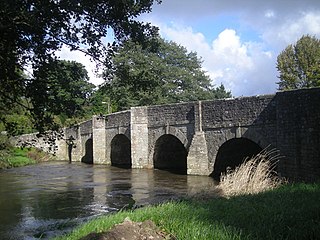
The A4113 road is a single-carriageway road that runs from Knighton in Powys to Bromfield in Shropshire, United Kingdom, passing through north Herefordshire.
Lingen is a village and civil parish, situated in the wooded hills of Herefordshire, England in the Welsh Marches, near to the border with Wales and close to the larger village of Wigmore. Situated in the north-west corner of the county, Lingen parish includes the hamlets of Deerfold, Limebrook, Birtley and Willey. It lies on the Limebrook which runs into the River Lugg south of the village. It lies at a height of between 145 and 283 metres above sea level.

Shelderton is a hamlet in south Shropshire, England. It is located just southeast of the village of Clungunford and is part of that village's civil parish.
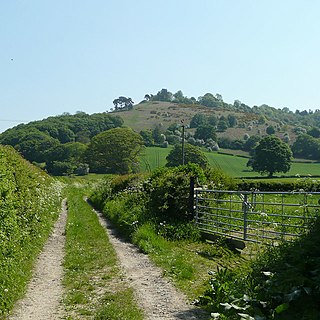
Croft Ambrey is an Iron Age hill fort in Herefordshire, England.

Richard's Castle is a village, castle and two civil parishes on the border of the counties of Herefordshire and Shropshire in England. The Herefordshire part of the parish had a population of 250 at the 2011 Census, the Shropshire part, 424.

Broadward is a dispersed hamlet in south Shropshire, England, situated by the border with Herefordshire. It is in the civil parish of Clungunford, a village approximately 2 miles (3.2 km) to the north.

Marlow is a hamlet in north Herefordshire, England.
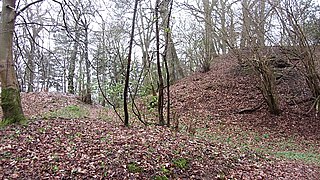
Coxall Knoll is a hill lying on the boundary of Shropshire and Herefordshire, England; it is near Bucknell in Shropshire and Buckton and Coxall in Herefordshire. On the summit is an Iron Age hillfort, a scheduled monument.

Jay is a hamlet located in north Herefordshire, England.
Heath is a dispersed hamlet in north Herefordshire, England.

The Redlake is a minor river in southwest Shropshire, England.
Brandon Camp is an archaeological site, about 1 mile south of Leintwardine, in Herefordshire. England. It is a hillfort of the Iron Age, which later became a Roman fort. The site is a scheduled monument.


















